Sometimes the Little Things Are Hard
And it feels like they're conspiring to break you
The longer we’ve lived a nomadic life, the more I sometimes want to go home. It’s really hard to constantly be away from a life that feels familiar, with all the conveniences and comforts we’re accustomed to, especially when we’re continuously changing locations and having to adapt. Sometimes things we once took for granted and maybe even paid little attention to become moments we long for, such as:
Having a (big) car to drive anywhere we want to go, especially the grocery store
Shopping for a week’s worth of groceries instead of 2 days’ worth because that’s all we can carry home
Big refrigerators and freezers so we can store said food; smaller fridges around the world hold much less
Ordering just about anything we need online
Microwaves and ovens (yes, there are places in the world without these)
Air-conditioning and, at the very least, screens on windows to keep the bugs out
Large kitchen garbages (so many are the size of a bathroom garbage can)
Big washing machines and dryers
Decent sized bedrooms
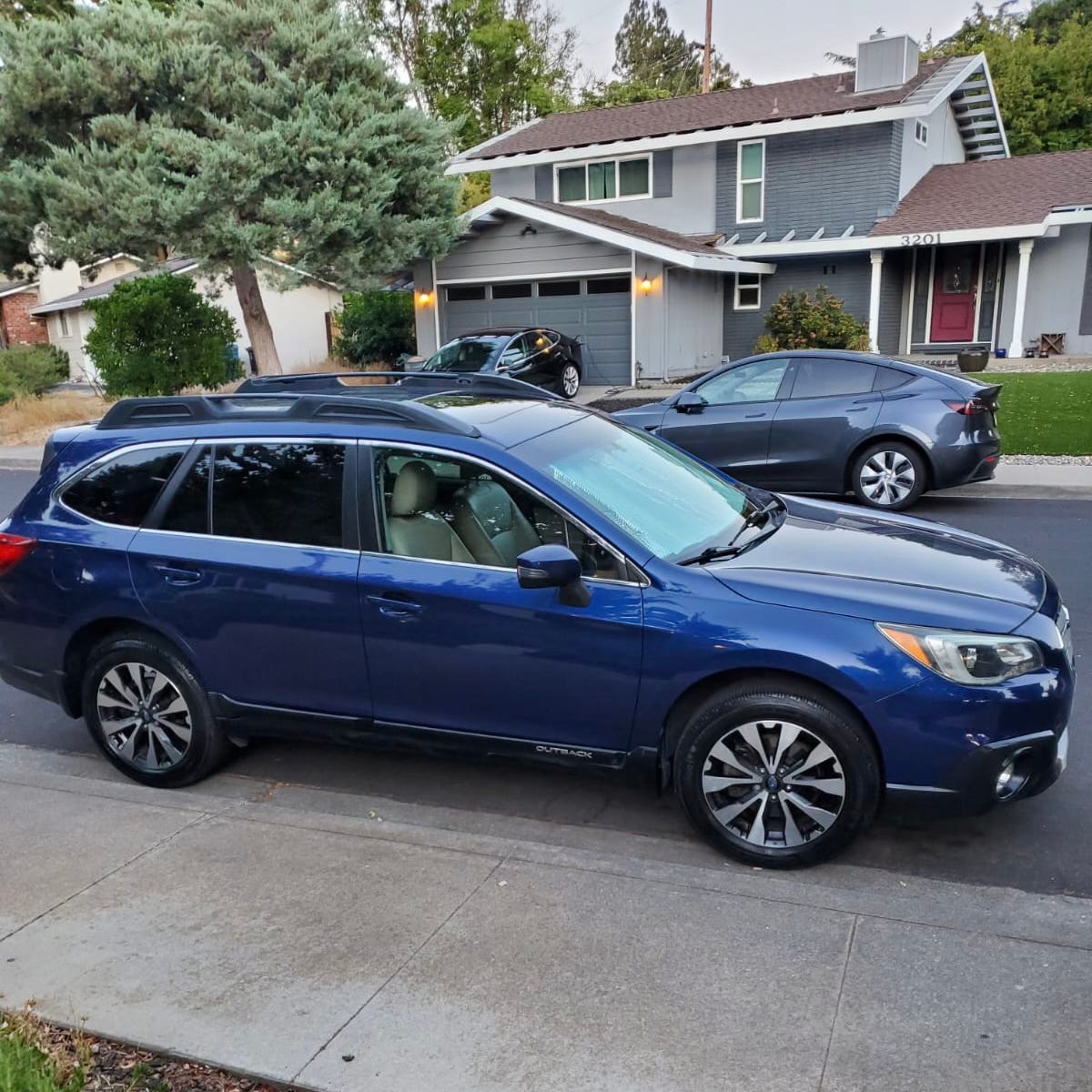
We’re now in Denmark, outside of Copenhagen, and the other day we needed to go to the grocery store again. We basically have to go every other day because we have no car (and there are no restaurants around us that are open*) so we can only buy what we can carry home. (I imagine full-time traveling families can relate.) Grocery shopping is a whole activity that looks like this:
Meal plan (~30-60 minutes); otherwise, we may end up with ingredients that don’t make anything. And when we’re cooking in a kitchen without a lot of staples, we have to be strategic in what we plan to make. It can’t have too many ingredients that we won’t use again because that’s wasteful and expensive, and they have to be ingredients we think we can find; not everything is available and, when it is, it’s sometimes pricey. So it’s good to have some backup plans in case a pivot in the middle of grocery shopping is necessary. Also, having a list to check is super important because it’s not easy to go back if we accidentally forget something. Planning to buy pre-made meals isn’t necessarily a great strategy, as they’re pricey and not nearly as prevalent as in the US, so there are fewer options. Also, we have no microwave, so heating them is cumbersome.
Gather our grocery bags and head to the store (~20-25 minutes); we need our big bags so we can stuff them full and carry them on our shoulders. Going to the store usually means taking the train, which involves looking at when the next one is coming (so we know if we need to hoof it or not) and buying our tickets as we walk so they’re activated by the time we get on. Fines for fare evasion in Denmark are no joke. But tickets are time bound, so we don’t want to get them too far ahead. Now that we’ve finally got a few bikes to use, we can also ride to a store. The trick either way is that we can’t get more than we can carry home, and weight factors in.
Shop (~60+ minutes). Sounds easy, but we’re still learning where certain items in each store are and we still need Google translate for any items we haven’t previously researched. Plus, if we have to make a recipe pivot, it may require putting some foods back and grabbing others. We often have to do currency conversions to see if a certain item is worth buying. (Note: We rarely get the sale prices because we don’t have loyalty cards and typically aren’t eligible for them, as they’re for residents with a local address and phone number.) Then we have to evaluate towards the end whether we think we can haul everything back home. If not, we have to decide which items to forego.
Travel home, lugging and balancing our bags (~20-25 minutes). Fortunately, Chris doesn’t mind carrying heavy bags, so if we’re taking the train, he takes two and I take what’s left. If we’re on bike, he takes the heavy backpack and I put the rest in my bike basket. We can’t get as much when we shop by bike. If we’re taking the train, we sometimes have to buy another train ticket home because the time on the first one has expired because it takes us so long to do the shopping. (To be fair, we only get a 75-minute window to go, shop, and come back, so it’s tight.)
Put everything away (~10 minutes). Again, it doesn’t sound complicated, but by this point we’re tired. And the refrigerator isn’t configured in a way that makes it easy to store everything. It’s tall and thin. The girls can’t reach the food at the top (the freezer is on the bottom) and the only place to stand bottles and containers up is on the side of the door. So it’s a bit like putting a puzzle together.
If I look at the time this shopping process takes, it’s not so much longer compared to the time it took to do a full grocery outing in the US. The difference is really the amount of physical and mental effort (much greater now) for the amount of groceries we get (much fewer now).
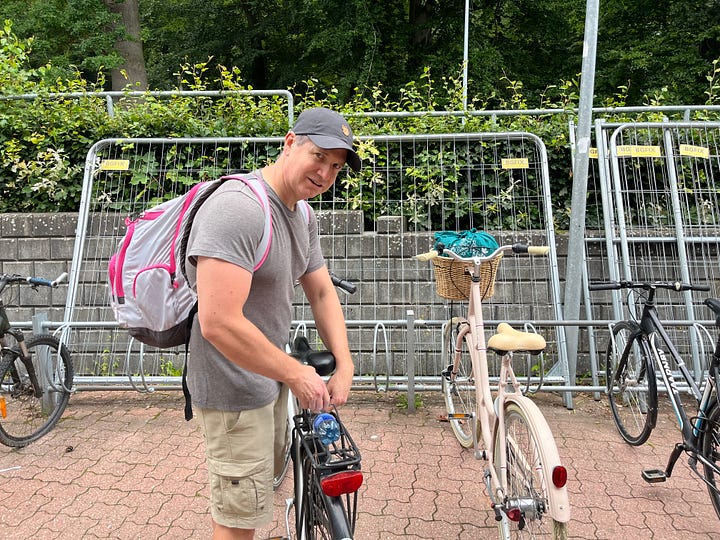
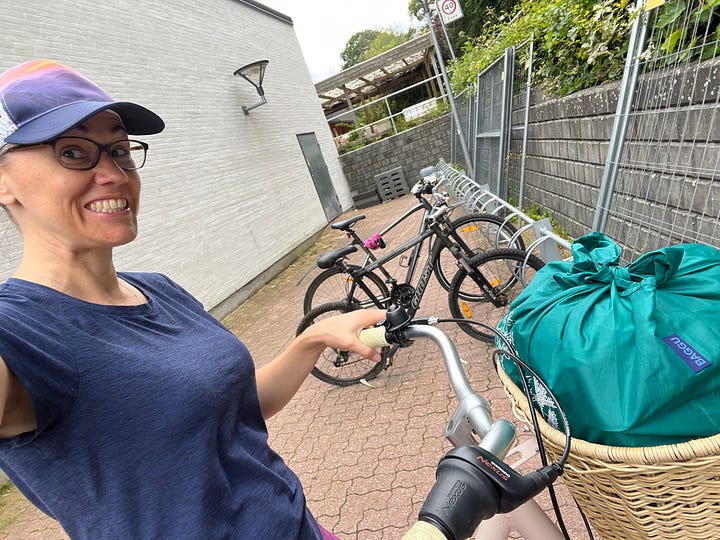
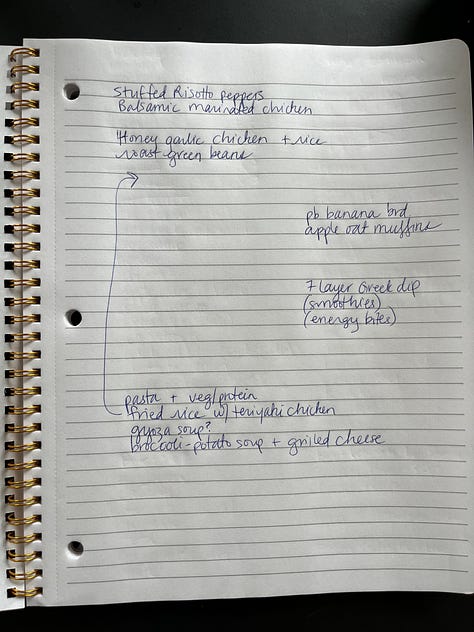
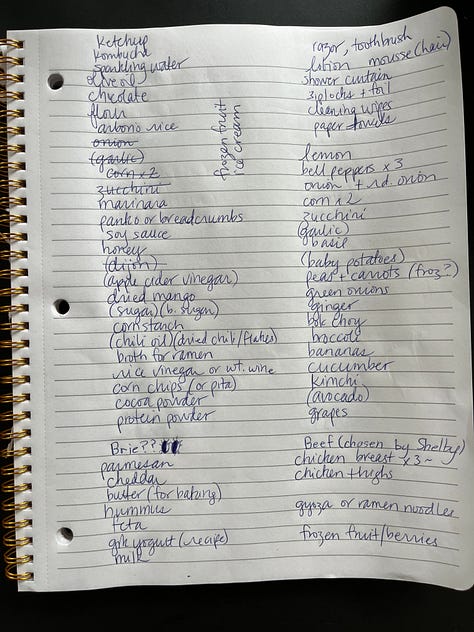

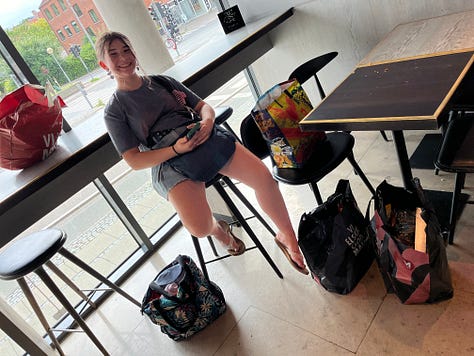
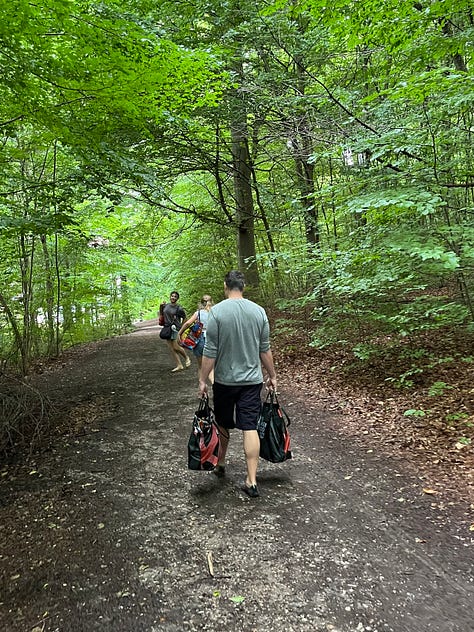
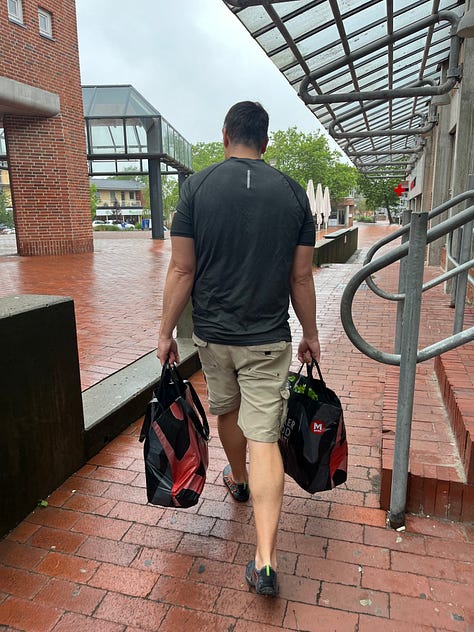
Compare this to the way we used to shop in the US, which we could do less frequently because we could buy enough for the week or as frequently as we wanted because it was “easy” to run out if we forgot something or needed just a few items:
Do some loose meal planning or not (~30 minutes). We had lots of staples we could pull from to put meals together so most often needed perishables like meats, dairy, and produce. It was also easy to plan to buy some ready-made or semi-ready meals we could heat up or throw together quickly.
Drive to the store (~15 minutes). Easy peasy. Ideally remember to bring grocery bags, but not a huge deal if we forgot. (Also, if we really didn’t want to go grocery shop, we could order online delivery! We didn’t do this a ton outside of peak pandemic time, but it was a nice option.)
Shop (~20-60 minutes). We knew where everything was, didn’t have to translate anything, and the cost was clear. Also, we got the discount prices because we had club cards (where applicable).
Drive home (~15 minutes). We never had to think about how many bags would fit in the car, how heavy they were, or if we could carry them all.
Put things away (~10 minutes). I mean, this always took effort but the fridge and freezer were big enough to hold what we bought and we had a good-sized pantry.
These are not insignificant differences when you consider the reduced physical and mental effort in particular. Exhibit A below. I took these video clips last year, long before we left the US.
Story time:
So the other day we went grocery shopping in Denmark by train; we stopped at two stores—one was new to us (so extra mental effort) and the other we had already been to. And by the time we got home I was annoyed and tired. I was trying to maximize the stand-up space on the refrigerator door and was trying to tuck the wine bottle in to make it fit (it had a cork so I didn’t want to risk laying it down) and the entire shelf fell on the floor. Milk started running out of the cardboard container and I melted down.
Chris sent me upstairs and he and the girls cleaned everything up, including dishes in the sink, etc. Later he called me back down to see Natasha’s solution for how to store the drinks that had been on the side of the fridge and now had no other place to go because they had to stand up. (I can’t embed the video directly because it’s too short, but it’s worth a watch. Also, notice how the drink cartons are basically at my eye level. The shelves towards the top really require reaching!)
Anyway, it was just one of those days where the basic things felt hard and I was over it. The laugh at N’s solution, plus a decent night of sleep helped, broken as it was. (Since it gets light so early and not all the windows have coverings, my brain knows when it’s light out, even with an eye mask.)
Despite feeling like grocery shopping and the effort to feed ourselves was conspiring to break us, there’s a lot to be said for appreciating what we have, and when we take our conveniences for granted, it can be easy to forget that not everyone has them. In fact, we didn’t even always have them (I remember life before microwaves, sort of, LOL). But they’re easy to adapt to and then hard to live without.
Putting it in perspective, I’m quite grateful for a comfortable home to stay in, in a safe and peaceful location (priceless), with an oven (even if not a microwave), a dishwasher, a washing machine with dryer (woohoo!), good Internet, and good water pressure and hot water, plus access to reliable public transportation (even if it is rather expensive). Many people in the world would love to live this well; we are beyond fortunate to have access to all that we do. And I’m aware that there’s no guarantee we get to keep this life.
What conveniences do you take for granted and which ones, if you’re traveling, do you miss most when you don’t have them?
*There’s one restaurant near us but it’s closed for summer break (the Danish take their vacation seriously, unlike Americans). It re-opens in 3 days. I’m counting down! But eating out is expensive in Denmark, so we’ll likely only visit occasionally.

